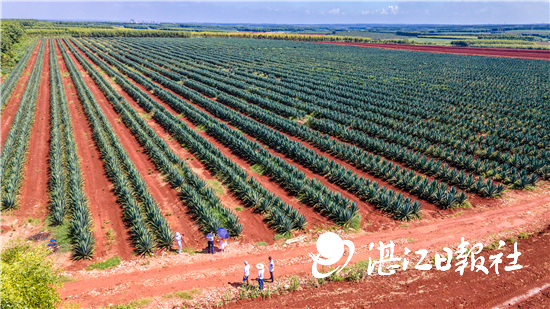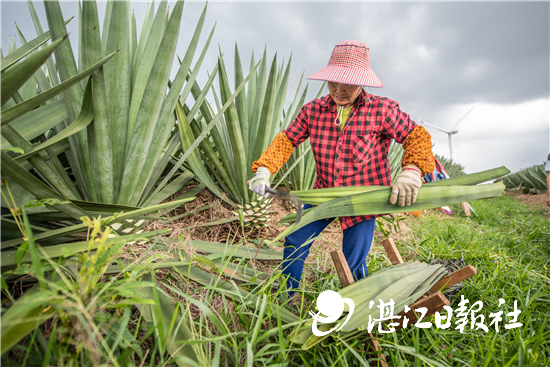Home> Photos
Zhanjiang: Nation's largest sisal hemp production base
Zhanjiang introduced sisal hemp from Mexico in the 1950s. After more than 60 years of development, the city has become the largest sisal hemp production base in China, and its output of related products accounts for 40 percent of the domestic market.
Sisal hemp fiber has the advantages of strong tension, good saline-alkali and friction resistance, as well as stable elasticity under wet and dry conditions. It is widely applied in the fields of transportation, fisheries, petroleum, and metallurgy. It is used to make cables, optical cables, buffing wheels, fine paper, insulating layers, packing materials, and special cloth.
In addition, tigogenin extracted from sisal hemp waste after the production of fibers is an intermediate and important raw material for the synthesis of steroidal hormone medicines.
The sisal hemp fiber produced in Zhanjiang was recognized as a National Protected Geographical Indication Product in 2006 for its high quality.

The vast sea of sisal hemp at the Sisal Modern Agriculture Industrial Park in Leizhou, a county-level city in Zhanjiang. [Photo/Zhanjiang Daily]

A worker harvests sisal hemp with a reaping hook in Zhanjiang. [Photo/Zhanjiang Daily]
- Flowering spathodea adds splendor to Zhanjiang streets 2019-04-09
- Blooming flowers add charm to Zhanjiang 2020-05-29

 Print
Print Mail
Mail 5G construction supports Zhanjiang's high-quality development
5G construction supports Zhanjiang's high-quality development
 Acting mayor inspects project construction in Xuwen, Leizhou
Acting mayor inspects project construction in Xuwen, Leizhou Zhanjiang island an "egret paradise"
Zhanjiang island an "egret paradise"  Dancing egrets add vitality to Xiashan
Dancing egrets add vitality to Xiashan